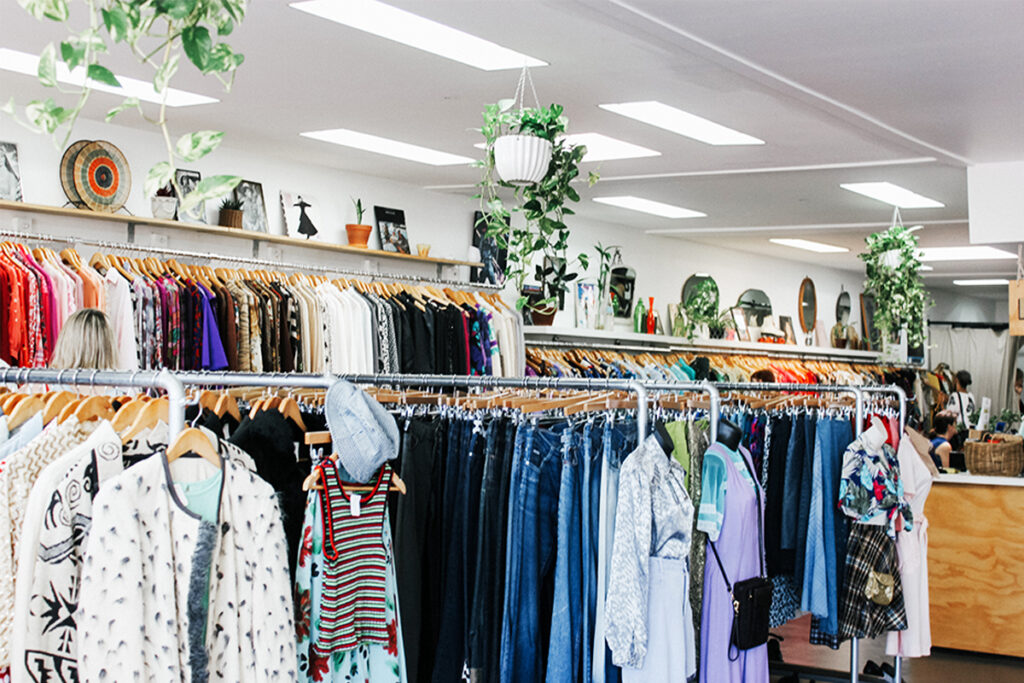You may have heard some people say, ‘I’d love to buy from ethical fashion brands, but it’s way too expensive’. And if you’ve ever done a quick price comparison, you might be tempted to agree.
Thankfully, you don’t have to spend huge sums of money—or any at all—to make fashion choices that are good for people and the planet.
Here’s seven ways you can dress more ethically and sustainably (and the first three don’t even require shopping).
1. Learn to love the clothes you’re in
Thinking ethically about your clothes doesn’t mean you have to start replacing everything you own with more ethical (potentially expensive) brands. One of the best things you can do is wear the clothes you already own.
Mass marketing and the convenience of online shopping encourages us to buy impulsively, and often, without considering whether we truly want the item. Instead, try slowing down the process. Pause, take a deep breath and ask yourself:
- Will I appreciate this item in a years’ time? In five years?
- Will this item last, quality-wise, and be regularly worn?
- Do I need another one of these? Be a proud outfit repeater!
- Can I repurpose something in my wardrobe instead?
2. Something borrowed instead of new
If you need an outfit for an event such as a wedding, try borrowing from someone rather than buying an item you’ll only wear a handful of times—or worse, once—or try a clothing rental service like Glam Corner.
You can also take it one step further and host a clothes swap. Try exchanging clothes with a group of friends, or go all out and hold a clothes swap with your church or community group. You can also try borrowing from your parents or grandparents’ wardrobes—you’ll likely find a vintage gem!

3. Take care of your clothes
Making your clothes last longer doesn’t just save money; it also helps reduce the amount of textiles sent to landfill. Here’s some ways to extend the life of your clothes:
- Try not to wash your clothes more often than needed
- Hang clothes straight up after wearing to reduce the amount of washing needed
- Remove stains as quickly as you can (carrying a stain remover pen helps)
- Follow the instructions on how to care for your garment
- Wash dark or coloured clothes inside out to prevent fading
Also, instead of replacing torn clothes, see if you can repair it. You don’t need to be a DIY genius to fix clothes; a basic sewing kit and a few online tutorials will do. Or find a great local tailor—often the cost of repairs is less than replacing the item with something new.
4. Think about cost per wear
So, you’ve examined your wardrobe, looked at your options, and identified an item you need to purchase. Now it’s time to go shopping.
When you do, calculate the cost per wear of what you’re buying, rather than thinking of the price as a one-off cost. Sometimes we baulk at a $45 T-shirt that’s ethically and sustainably made because we’re so used to seeing lower-quality T-shirts retailing for $10. But that cheaper top can be more expensive in the long run if you need to replace it after one season, compared to a well-made item that will be regularly worn for many years.
5. Follow the ethical brands you love
Brands taking steps to improve their supply chains aren’t always the most expensive, so try using a tool like our Ethical Fashion Guide to see what your options are. If you love an ethical brand, join their mailing list, or follow them on social media. You’ll find out when they discount their prices to clear stock they can’t sell, or items with slight aesthetic faults.
6. Embrace second-hand shopping
Second-hand shopping is a fun and affordable way to buy quality clothing at a fraction of the price. It’s also far more sustainable than buying new, as you’re saving resources and keeping clothes in circulation for longer.
If perusing op shops isn’t your thing, apps like Poshmark make it easier to search for items you need. And try selling good quality clothes you no longer wear, which saves money while giving items a new lease of life.

7. Be kind to yourself
It’s okay to start small! Sometimes we have seasons when we need to do what is convenient, for the sake of those we care for, or our own health and wellbeing. Creating positive change for garment workers isn’t about a few of us doing everything perfectly, but all of us doing what we can, and supporting each other along the way.



 Bonnie Graham,
Bonnie Graham,
